Posted on REAL SIMPLE by Melinda Page
http://www.realsimple.com/food-recipes/shopping-storing/food/springs-best-fruits-vegetables-00000000013534/index.html
How to choose, store, and use this season’s most versatile fruits and vegetables.
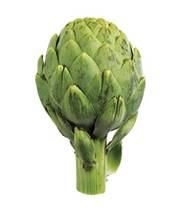 Artichokes
Artichokes
Choose an artichoke that is deep green with tightly packed leaves that are closed at the top. Blackening on the stem is a sign an artichoke is old. Keep artichokes in a plastic bag in the refrigerator for up to one week. To prep one for steaming, trim the tips and stem. Steam until tender and the leaves pull away without too much resistance. Serve with a vinaigrette or melted butter for dipping.
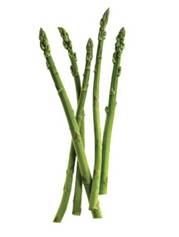 Asparagus
Asparagus
Whether thin or thick, asparagus stems should be bright green, firm, and straight. The buds, or tips, should be tightly closed. Wrap the bottoms in a damp paper towel and keep in a plastic bag in the refrigerator for up to three days. Before cooking, rinse to remove sand from the tips and snap off or trim the bottoms (peeling is not necessary). Asparagus is good raw, blanched, broiled, or roasted.
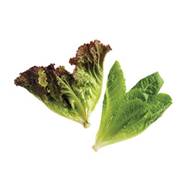 Baby Lettuces
Baby Lettuces
Look for leaves that are whole and unbroken with no signs of wilting or browning. For optimal flavor, select a mix of several varieties. Keep unwashed greens in a plastic bag in the vegetable drawer of the refrigerator for up to four days. They should be kept separate from apples and pears, which give off ethylene gas and can turn lettuce brown. To show off the delicate flavor of the greens, dress them simply with extra-virgin olive oil, salt, and pepper.
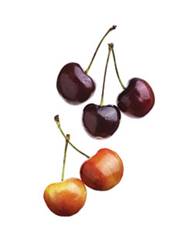 Cherries
Cherries
The best cherries are plump and firm with unblemished, glossy skin in a uniform color; a deeper red yields a sweeter taste. (The exception is Rainier cherries, which have a creamy yellow and red exterior.) They’re highly perishable and should be eaten within a day or two of purchase; those with stems typically last longer than those without. Don’t wash the fruits until you’re ready to eat them—moisture speeds decay—and store in a bowl or open plastic bag in the refrigerator. Cherries are delicious eaten out of hand or pitted, tossed with mint, and served over ice cream. Cooked cherries make an excellent accompaniment to duck or pork as well as a sweet filling for pies.
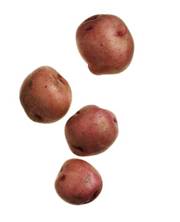 New Potatoes
New Potatoes
Freshly dug young potatoes should have firm, smooth skin (usually red or tan) and be free of sprouts, soft patches, and green spots. Store new potatoes in a paper bag in a cool, dark, dry place, like a pantry shelf or a basement, for up to three days. There’s no need to peel new potatoes; simply scrub them with a brush. Firm and flavorful, they’re ideal in potato salad: Boil new potatoes until just tender, 8 to 10 minutes, then toss warm with vinaigrette and chopped fresh chives.
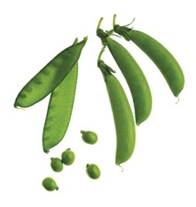 Peas (Snow, Garden, and Sugar snap)
Peas (Snow, Garden, and Sugar snap)
Ripe snow peas should be light green and almost translucent, with tiny seeds. Look for garden pea pods that are glossy, crunchy, sweet, and full of medium-size peas. Sugar snaps should be bright green with plump pods. Keep unwashed peas loosely wrapped in plastic in the vegetable drawer of the refrigerator for up to four days. Snow and sugar snap peas can be eaten raw after removing the stems and the strings. Garden peas should be shelled and blanched in boiling water just until they turn bright green.
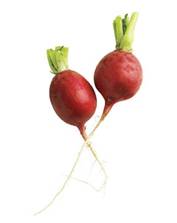 Radishes
Radishes
A fresh, tasty radish is firm when squeezed and free of cracks. Remove the leaves and keep radishes in a plastic bag in the refrigerator for up to five days. Just before using, trim the stems and the root ends and wash. For a fresh side dish: Braise radishes in butter and balsamic vinegar until barely tender, 6 to 8 minutes, and serve with mild fish, like striped bass.
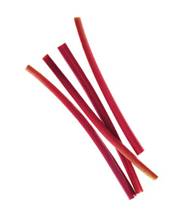
Rhubarb
Rhubarb stalks should be firm, not limp, with a deep red color. Keep unwashed in a plastic bag in the vegetable drawer of the refrigerator for up to one week. Remove the leaves before using (they contain oxalic acid, which is toxic if eaten in large quantities). Rhubarb is quite tart and is best when cooked with sugar in compotes or used as a pastry filling. Try it in pies, crisps, or cobblers, or paired with strawberries or raspberries.
 Scallions
Scallions
Many green onions picked before they are matured are referred to as scallions, but true scallions are a distinct and milder variety. Fresh scallions should have bright green tops and firm, white bases. Keep bunches unwashed and wrapped in a plastic bag in the refrigerator for up to five days. Trim the roots just before using. Scallions are ideal grilled, sautéed, and sliced raw in salads, soups, and sandwiches.
 Spinach
Spinach
Look for deep, darkly colored, and unbroken leaves with no signs of wilting or yellowing. Keep unwashed spinach in a plastic bag in the refrigerator for up to three days. Chop off any thick stems, then swish the leaves in a bowl of cold water. (They can be sandy, so change the water several times.) Spinach can be sautéed, steamed, baked, and served raw.
 Strawberries
Strawberries
Look for deep, darkly colored, and unbroken leaves with no signs of wilting or yellowing. Keep unwashed spinach in a plastic bag in the refrigerator for up to three days. Chop off any thick stems, then swish the leaves in a bowl of cold water. (They can be sandy, so change the water several times.) Spinach can be sautéed, steamed, baked, and served raw.
Original Article: REAL SIMPLE
http://www.realsimple.com/food-recipes/shopping-storing/food/springs-best-fruits-vegetables-00000000013534/index.html
